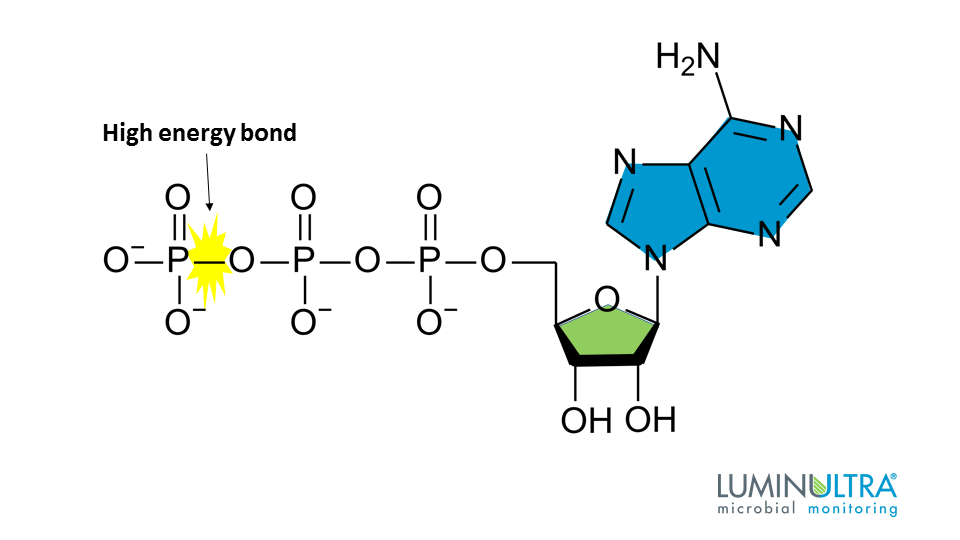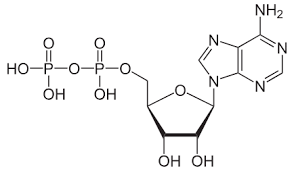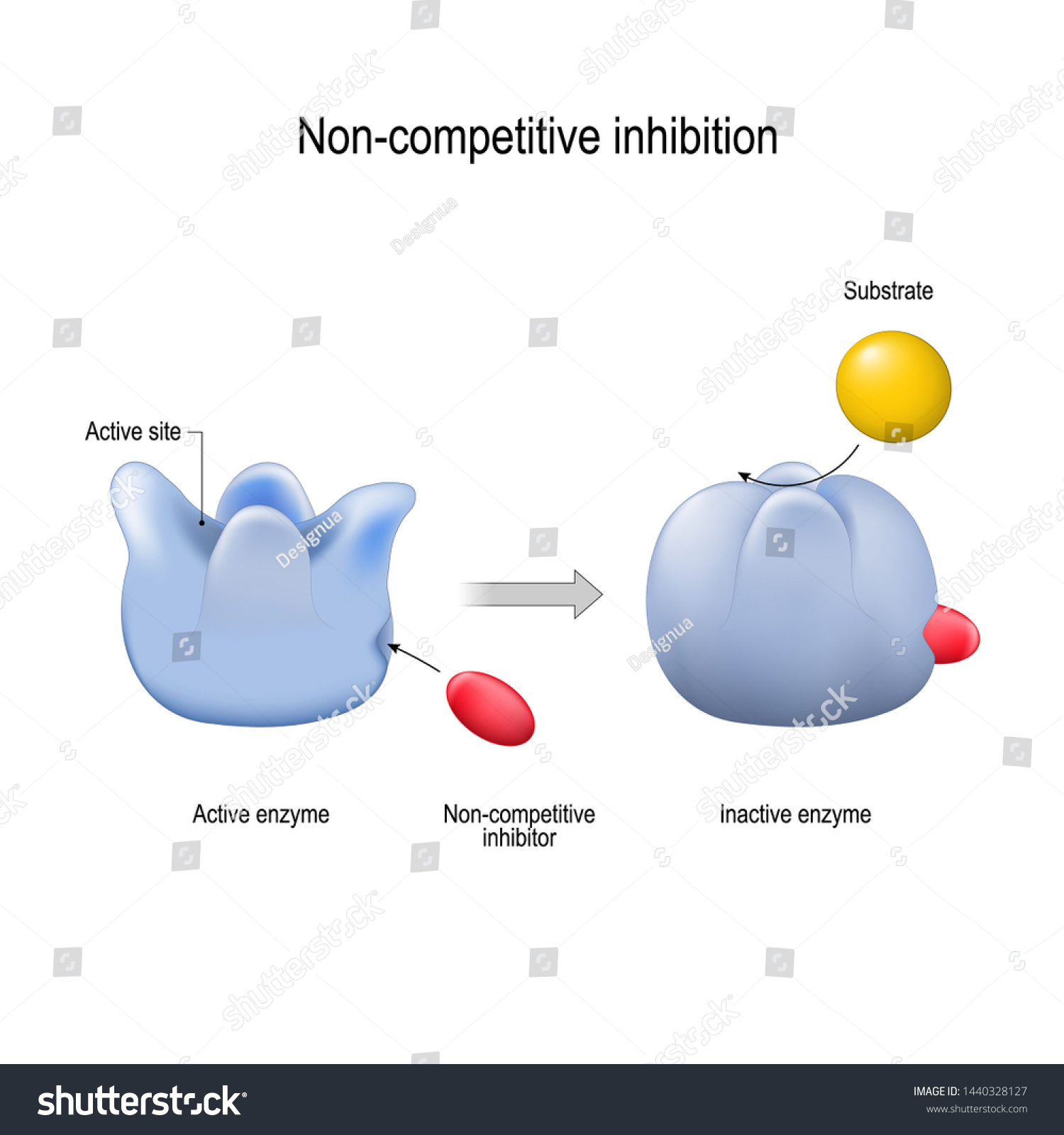AP Biology Unit 3
1/64
Earn XP
Description and Tags
Vocab from unit 3 of AP Biology, cellular energetics. Main topics: enzymes, cellular respiration, photosynthesis.
Name | Mastery | Learn | Test | Matching | Spaced |
|---|
No study sessions yet.
65 Terms
ATP
(adenosine triphosphate) main energy source that cells use for most of their work

ADP
adenosine diphosphate; molecule that ATP becomes when it gives up one of its three phosphate groups

Substrate Level Phosphorylation
This is when a phosphoryl group is transferred from a substrate to ADP or GDP to form ATP or GTP, coupled with the release of free energy. This type of phosphorylation occurs in glycolysis and the citric acid cycle.
Cellular Respiration
This is a series of chemical reactions that break down glucose to produce ATP, which may be used as energy to power many reactions throughout the body. There are three main steps of this process: glycolysis, the citric acid cycle, and oxidative phosphorylation.
Fermentation
This process follows glycolysis in the absence of oxygen. This is the chemical breakdown of a substance by bacteria, yeasts, or other microorganisms, typically involving effervescence (bubbles) and the giving off of heat. Like cellular respiration, this process is characteristic of all forms of life, however, unlike cellular respiration, this process does not use oxygen, instead other final electron acceptors are used, such as sulfate or nitrate.
In humans, this occurs in the muscles and produces lactic acid (causes muscle cramps.)
In yeasts, for example, this produces alcohol.
Alcoholic Fermentation
This is the process during which yeasts convert sugars to ethanol, carbon dioxide. It has two steps: glycolysis and NADH regeneration.
Glycolysis
This is the first step of cellular respiration. This step is important because it is the metabolic pathway through which glucose generates cellular energy through substrate level phosphorylation. Glucose is the most important source of energy for all living organisms and it is broken into 2 pyruvate (6 carbon molecule broken into two, 3 carbon molecules). Hydrogen from glucose is used to reduce two NAD+ to two NADH and it carries electrons to the electron transport chain. It has a net gain of 2 ATP ( 2 used, 4 created).
1 Glucose, 2 ATP, 2 NAD+
Input of glycolysis
2 NADH, 2 net ATP, 2 pyruvate
Output of glycolysis
Cytosol
Glycolysis occurs in the BLANK
Pyruvate Oxidation
This is the second step in cellular respiration. It occurs as pyruvate is transported into the mitochondria. It is important because the NADH that is produced is carried to the electron transport chain, also, the pyruvate is prepared for the Krebs cycle.
Each pyruvate turns into a 2 carbon molecule bonded to coenzyme A (known as Acetyl CoA)
2 Carbon dioxides are released
2 NADH is produced.
2 Pyruvates, 2 NAD+. 2 Acetyl CoA
Input of pyruvate oxidation
2 Co2, 2 NADH, 2 Acetyl CoA
Output of pyruvate oxidation (for 1 glucose)
Mitochondrial Matrix
This is where pyruvate oxidation occurs
Krebs Cycle / Citric Acid Cycle
This is the 3rd step of cellular respiration.
It’s important because:
Substrate Level Phosphorylation
NADH & FADH2 (carries electrons to ETC)
Completes breakdown of glucose
Makes 1 ATP, 3 NADH, and 1 FADH2
2 Acetyl CoA, 4 Nad+, 2 FADH
Input of Krebs Cycle
6 NADH, 2 FADH2, 2 ATP, 4 CO2
Output of Krebs Cycle (for 1 glucose)
Mitochondrial Matrix
This is where the Krebs cycle occurs.
Oxidative Phosphorylation
This is the final step of cellular respiration. Oxygen is used in this step as an electron acceptor as electrons are transferred from electron carriers to oxygen, resulting in ATP synthesis. Its two components are the electron transport chain and chemiosmosis. Water is formed in this processes after O2 is split and picks up H+ ions.
ETC: electrons are passed from one molecule to another, and energy released in these electron transfers is used to form an electrochemical gradient.
Chemiosmosis: energy stored in the gradient is used to make ATP
This stage creates 32 ATP total.
Electrons (10 NADH & 2 FADH2 ), 2O2
Input of oxidative phosphorylation
32 ATP, 2 H2O
Output of oxidative phosphorylation
Mitochondrial Cristae
This is where oxidative phosphorylation takes place.
Electron Transport Chain
This does not make ATP, but instead it produces the protein gradient by pumping protons into the intermembrane space. Oxygen is used in this step as it serves as the final electron acceptor of the electron transport chain facilitating the movement of electrons down the chain hence producing the ATP or adenosine triphosphate.
Photosynthesis
This occurs in plants in two main stages, light dependent reactions and light independent reactions (Calvin Cycle). Energy from light is used by the chloroplast electron transport chain to pump protons across the thylakoid membrane into the lumen of the thylakoid. Water splitting also releases hydrogen ions into the lumen and replaces the 2 electrons lost from photosystem 2.
Pigment
A substance that absorbs visible light.
Chlorophyll
Any of several green pigments associated with chloroplasts or with certain bacterial membranes; responsible for trapping light energy for photosynthesis.
Light Reactions
The first stage of photosynthesis. Its important because ATP is produced to fuel the Calvin Cycle. NADH also transports electrons for the reduction of carbon.
It takes place in the thylakoid membrane
require a constant input of light energy
Chlorophylls absorb light which is converted into chemical energy through the formation of ATP & NADPH
water molecules are split into oxygen and hydrogen ions
ATP synthesis requires an electrochemical gradient to form across the thylakoid membrane.
Photons, H20
Input of light reactions
ATP, NADPH, O2
Output of light reactions
Thylakoid Membrane
This is where light reactions take place.
Calvin Cycle
Also known as dark reactions, this process is important because it stores energy in the form of G3P. It also uses ATP and NADH to change carbon from an inorganic molecules to an organic molecule (carbon fixation). It also produces glucose. Carbon fixation is the first step of the BLANK. It involves the enzyme RuBisCO ''fixing'' CO2 to RuBP, producing two molecules of 3-PGA.
6 NADPH, 9 ATP
Input of Calvin cycle
G3P
Output of Calvin Cycle
Stroma
This is where the Calvin cycle occurs
Metabolic Pathway
series of connected chemical reactions that feed one another
Anabolic Pathway
These build complex molecules from simpler ones and typically need an input of energy.
Catabolic Pathway
involve the breakdown of nutrient molecules into usable forms (building blocks). In this process, energy is either stored in energy molecules for later use, or released as heat.
Carbon Fixation
This is the process by which inorganic carbon from the atmosphere is assimilated into living organisms and converted into organic compounds. These compounds are used to store chemical energy. BLANK is the first step of the Calvin cycle. It involves the enzyme RuBisCO ''fixing'' CO2 to RuBP, producing two molecules of 3-PGA.
Cyclic Photophosphorylation
This occurs only in Photosystem 1. In this type, only ATP is produced, whereas both NADPH and ATP are produced in the other type.
Chloroplasts switch from linear to cyclic when the ratio of NADPH to NAD+ is too high
This pathway is common in cells w/ high ATP needs
may play a photo-protective role: prevent excess light from damaging photosystem proteins & promoting repair of light - induced damage
Non-Cyclic Photophosphorylation
This occurs in both Photosystems 1 and 2, and it results in both ATP and NADPH being produced. It requires light to be absorbed twice.
NADH vs NADPH
The main difference between these two electron carriers is that the first is mainly involved in catabolic reactions whereas the latter is mainly involved in anabolic reactions.
PSII
light energy is transferred to P680 , boosts an electron to a high energy level'
high - energy electron is replaced w/ an electron from water
The splitting of water releases 02
this is the system that produces ATP
ATP Synthesis in PSII
high - energy electron travels down an electron transport chain (losing energy)
released energy drives H+ ions building a gradient
H+ ions flow down the gradient & pass through ATP synthase driving ATP production
PSI
This is the second stage of photosynthesis
electron joins P700 & boosts it to a high -
energy level
NADH Formation in PSI
high - energy electron travels down transport chain
is passed to NADP+ along w/ a second electron to make NADPH
Oxidation
Blank is when something loses electrons.
Reduction
BLANK is when something becomes gains electrons.
Laws of Thermodynamics
when an energy transfer happens ,
some unusable energy is released as heat
heat increases the disorganization of the universe ( entropy)
processes that decrease entropy require an expenditure of energy (LOCALLY)
Reaction Coupling
This is when an energetically favorable reaction (like ATP hydrolysis) is directly linked with an energetically unfavorable (endergonic) reaction.
Uncoupling Proteins
These are mitochondrial carrier proteins which are able to dissipate the proton gradient of the inner mitochondrial membrane. This uncoupling process reduces the amount of ATP generated through an oxidation of fuels.
NAD
nicotinamide adenine dinucleotide - a coenzyme that is an electron carrier; NAD+ is oxidized, NADH is reduced
Catalyst
A chemical agent that speeds up a reaction without being consumed by the reaction.
Enzyme
Protein that speeds up reactions. Typically end in "ase" (ex. Peroxidase, Lipase)
Activation Energy
The amount of energy needed to push the reactants over an energy barrier.
Active Site
A pocket or groove on the surface of the enzyme where a substrate can bind.
Induced Fit Model
States that the enzyme and substrate undergo conformational changes to interact fully with one another (as opposed to "Lock & Key")
Competitive Inhibitors
These reduce the productivity of enzymes by blocking substrates from entering active sites.
Non-Competitive Inhibitors
Impede enzymatic reactions by binding to another part of the enzyme (other than the active site). This site is called the allosteric site.

Substrate
the substance an enzyme catalyzes, changes.
Denature
Characteristic of proteins; a change in shape that stops the protein from functioning. (the proteins secondary, tertiary, and quaternary structures can be damaged by this.)
C6H12O6+6O2→6CO2+6H2O+ATP
Cellular Respiration Equation
6CO2 + 6H2O + light energy --> C6H12O6 + 6O2
Photosynthesis Equation
Kinase
A type of enzyme that adds chemicals called phosphates to other molecules, such as sugars or proteins. (helps convert ADP to ATP by adding a phosphate group).
Exergonic
An BLANK reaction is one that releases energy
Endergonic
an BLANK chemical reaction is one that requires the input of energy